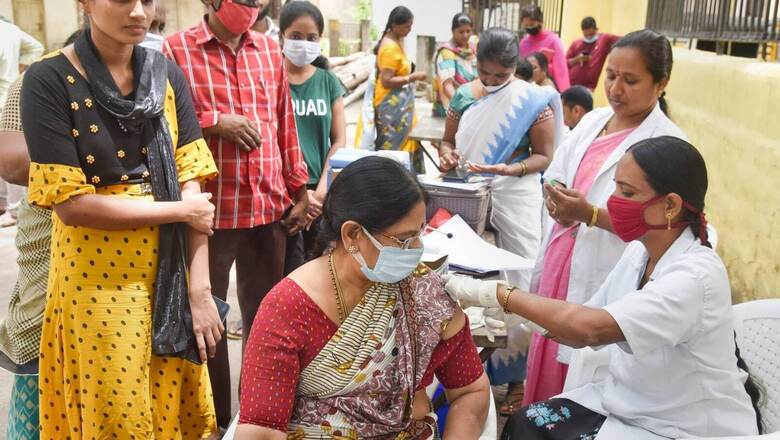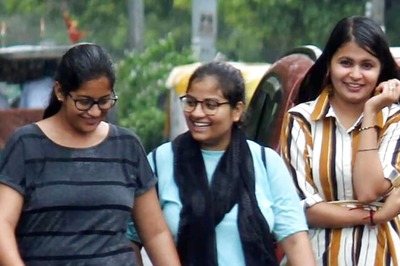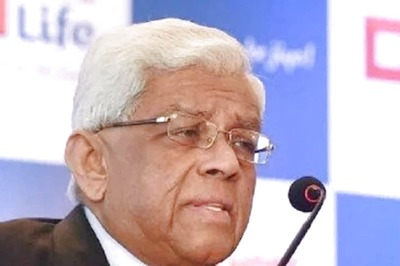
views
To facilitate and enhance the ongoing mass vaccination campaign for Covid-19, the government has made booster doses free for citizens above 18 years of age for 75 days, starting July 15. This announcement has come amidst the rise of Covid-19 cases across India.
The decision is not only bold, but also smart. This is because a staggering 92% Indians, who are currently eligible for a third dose, have not yet taken their shots and are now late receivers. The move is targeting many objectives together: increasing affordability, improving accessibility to more groups and strengthening the trust of the people in government authorities. However, poor awareness and implementation can hinder the ultimate objective of the decision.
Record-Breaking Numbers
The first day of the 75-day campaign saw 13.2 lakh doses of the booster shot being administered to 18-60-year-olds, a 16-fold jump over the pace thus far. The average rate of precaution dose was 81,000 a day in the country since April 10.
A Smart Move by the Centre
Since the beginning of the vaccination drive, the Union government adopted a free market approach. Private hospitals were able to procure vaccines directly from the manufacturers and price them. There was no price capping. Extremely high prices charged by hospitals made it almost impossible for the general public to afford them.
In parallel, people weren’t able to find vaccine slots at government health facilities. This had put many poor and vulnerable groups at a disadvantage. Lack of affordability was one of the primary reasons for stagnated inoculation amongst the general public. The prolonged lockdown brought with it severe economic and financial challenges. People were pushed towards poverty and hence spending on vaccinations was never the first choice. So far less than 5% of the total population have taken their third shot. The recent move to make boosters free for all above 18 can actually act as an intrinsic motivator for people to get their precautionary doses quickly without any delay.
It was recently reported that hundreds of millions of Covid-19 vaccines in India (both Covishield and Covaxin) will expire by September. As vaccine wastage is becoming a major concern, it is only hoped that the wastage can be stopped when we make vaccines more accessible to all.
How Can We Make it Smarter?
Vaccination-for-all is one of the most important tools in our fight against this pandemic. We have to increase vaccination across our population to reduce the future disease burden of Covid-19. Improving accessibility to vaccines has been a major challenge that the country is facing. We can overcome the challenge via opening more centres across the country. Offering all doses of vaccines free of cost will act as a huge nudge for people to take vaccines.
Scientifically deciding the gap between vaccines instead of going for longer durations will help to protect large populations. A sustained campaign to encourage people to take more vaccines can be achieved via appropriate communication measures. Continuous efforts are required to make people aware about change in prices or durations between the doses.
Why Should All Vaccines Be Free?
Vaccinations are one of the most cost-effective public health interventions. Benefits range from protection against infection and a reduction in harms. By preventing infections and reducing severity of disease, it also prevents the costs associated with being sick. This not only includes short-term costs such as the cost of getting hospitalised or missing work but also long-term health and financial burden.
Vaccines also prevent the need for lockdown and a reduction in economic activity. They provide what we call a “positive externality”. This means that the benefits of taking the vaccine are also passed on from the person taking the vaccine to others. So, if a majority of people in a geographical area are immunised, the chances of the non-vaccinated people getting the infections reduces exponentially.
Making vaccines free for all is a smart strategy but it should not only be followed for the Covid-19 pandemic. It is a strategy that the government should follow for all future threats, including Monkeypox.
With a rise in globalisation, man-animal interaction and climate change, the risk of newer infections surfacing and fireballing into a worldwide threat has skyrocketed. Vaccines are the rock bed of our fight against these new threats.
Harshit Kukreja is Research Analyst, The Takshashila Institution. Mahek Nankani is Assistant Programme Manager, The Takshashila Institution. The views expressed in this article are those of the authors and do not represent the stand of this publication.
Read all the Latest News, Breaking News, watch Top Videos and Live TV here.



















Comments
0 comment